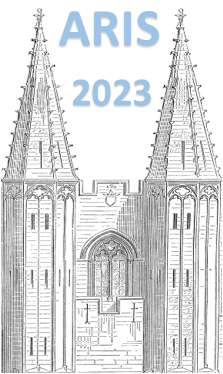Orateur
Description
I will overview storage-ring nuclear physics at GSI/FAIR and RIKEN with a focus on recent technical developments with future perspectives. The experimental storage ring ESR at GSI has pioneered mass measurements of exotic nuclei and decay studies of highly charged ions (HCI)[1]. Radioactive ions produced at the fragment separator FRS are in-flight separated and are stored into the ESR where two methods of mass spectrometry have been established. One is the time-resolved Schottky mass spectrometry where stored ions, cooled with the stochastic and/or electron cooling techniques, are frequency analyzed by non-destructive Schottky detectors, and the other is the isochronous mass spectrometry where revolutions of short-lived ions are directly measured by an in-ring dedicated time-of-flight detector under a specific optical condition. The FRS-ESR facility features relativistic energy and cooled heavy ions, highlighted by the discovery of new isotopes, new long-lived isomers, and the observation of bound-state beta decays, hyperfine effects of HCI. The facility will be upgraded to the FAIR ring branch based on the Isomeric beams, Lifetimes and Masses (ILIMA) collaboration.
The RI Beam Factory (RIBF) at RIKEN features the largest cyclotron facility complex. Taking advantage of the highest intensities of radioactive ions, a new mass spectrometer, Rare-RI Ring (R3) [2], for exotic nuclei has recently been launched. The spectrometer consists of a cyclotron-like storage ring coupled with the fragment separator BigRIPS. The isochronous mass spectrometry is employed, where only dipole magnets form a weak focusing lattice to realize the precise isochronous optical condition with a large momentum acceptance. Because of the beam characteristic, exotic nuclei of interest are individually, in-flight selected to be stored in the storage ring. Thus, single-ion mass spectrometry with the individual injection scheme has been accomplished. The first application for neutron rich Pd isotopes has recently been published [3].
Both facilities are unique and complementary. Collaborative technical studies are proceeding toward common goals; a position-sensitive transverse Schottky detector has been designed at GSI and will be tested at RIKEN. A high-resolution GAGG(Ce) crystal telescope (~50 ps time and ~1% energy resolution) was tested with heavy ions at the Heavy Ion Medial Accelerator in Chiba (HIMAC) facility in Japan and has been installed as a decay study pocket detector at the ESR. Additionally, new specific detectors: a time-of-flight detector based on delta-ray readout technique (~80 ps time resolution) and low-cost position-sensitive plastic scintillation detectors with fiber readout techniques (~1 mm spatial resolution) have been developed in Japan, which can be extended as a general purpose as well. With these instruments, the facilities will be upgraded for decay and reaction studies, beyond conventional mass measurements, of exotic nuclei available at both facilities.
References
[1] F. Bosch et al., Prog. Part. Nucl. Phys. 73, 84 (2013).
[2] A. Ozawa et al., Prog. Theor. Exp. Phys. 2012, 03C009 (2012).
[3] H. F. Li et al., Phys. Rev. Lett. 128, 152701 (2022).

